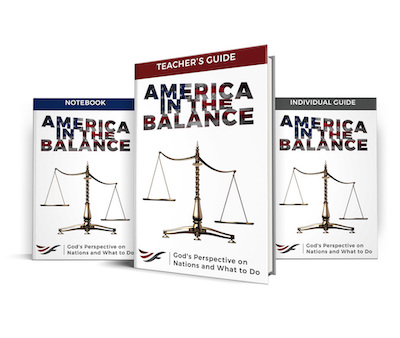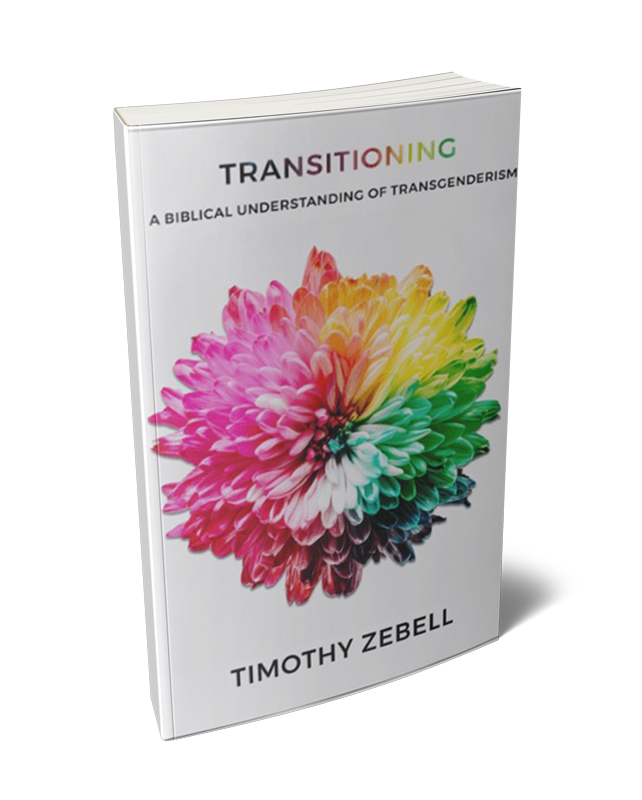What exactly happened on June 26, 2015, and why did it divide the nation? To understand this, we must first understand what the Supreme Court was asked to decide upon. For some time various states had voted upon constitutional amendments designed to either open or close marriage to members of the same sex. In many of the instances where the people voted to protect the definition of marriage as being restricted to a man and a woman, the federal courts intervened. In the Fall of 2014, most of the states where same-sex marriage was legal were so as a result of judicial activism.
Prior to Obergefell v. Hodges, it was rarely reported that same-sex marriage had been voted into law by the will of the people. Instead, the news media consistently announced that same-sex marriage had been “legalized” in yet another state. The reason for this is that in nearly every state where same-sex marriage was legal before the Supreme Court’s ruling, it was so as the result of judicial activism. In fact, it was not until November 6, 2012 that the first state approved same-sex marriage through a constitutionally approved vote of the people. In other words it was not until nearly the year 2013 that the very first state in America legalized same-sex marriage by popular vote rather than through judicial activism.
Understanding this, it is amazing that only two years later the Supreme Court “discovered” that same-sex marriage has always been a fundamental right protected by the Constitution of the United States of America. In any event, consider some excerpts from the November 7, 2012 CNN article titled “Voters Approve Same-Sex Marriage for the First Time:”
In a historic turnaround, the ballot box is showing America’s shifting attitudes about same-sex marriage. After gay marriage rights died at the polls dozens of times in the past, on Tuesday they passed in at least two states.
Rarely do popular votes reflect such dramatic social changes.
The result: Maryland and Maine will now allow couples like Chyrino Patane and James Trinidad to tie the knot. … But the win was hard fought and the margin of victory was small.
“We’ve lost at the ballot box 32 times,” said Paul Guequierre of Human Rights Campaign. … In Maryland, where just 51.9% of voters approved gay marriage rights, “It was a little bit pins and needles,” said Human Rights Campaign’s Kevin Nix. “It was going to be a close call all along.” … In 2009, a similar referendum in Maine failed when voters rejected the governor’s decision to allow same-sex marriage. Tuesday’s results represent a remarkable turnaround. … Thirty-eight states have passed bans on marriages between people of the same gender, mostly by amending their constitutions to define marriage as a union between a man and a woman.
In the six states – Massachusetts, Connecticut, Iowa, Vermont, New Hampshire and New York – and the District of Columbia where gays and lesbians have previously won marriage rights, it was because of actions taken by judges or legislators, not voters.[1]
Because of this judicial activism, which repeatedly overturned the democratic process and state constitutional amendments, those opposed to same-sex marriage wanted the Supreme Court to over-rule these federal courts of appeals. Interestingly enough, supporters of same-sex marriage also wanted the Supreme Court to decide the issue because they saw an opportunity to forcibly legalize same-sex marriage in every state via one court ruling rather than continue the drawn-out appeals process. Despite the fact that both parties wanted the Supreme Court to hear the case, the Supreme Court refused to hear cases from three federal courts of appeals on the matter of same-sex marriage. Because of this, on October 6, 2014, the Atlantic ran the headline “The Same-Sex Marriage Fight Is Over: By Refusing to Take a Stand on Lower-Court Decisions, the Justices Have Effectively Settled the Fight—in Favor of Gays and Lesbians Who Want to Marry.”[2]
Since every federal court of appeals ruling prior to this point had been in favor of same-sex marriage, the Supreme Court had essentially legalized same-sex marriage in 2014 with a de facto ruling. Because of this failure to rule—which was little less than a ruling in-and-of-itself—all pending appeals were essentially considered to be concluded in favor of same-sex marriage. Within a single day our nation jumped from same-sex marriage being legal in 19 states to it being essentially legal in 30 states. As for the remaining states, the Supreme Court had issued a virtual directive ordering them to follow suit, or the federal courts of appeals would forcibly overturn their laws. For all practical purposes, the Atlantic was correct when it declared “The Same-Sex Marriage Fight Is Over.”[3]
Of such significance were the implications of the Supreme Court’s decision not to rule on this issue that journalist Brit Hume declared the issue of same-sex marriage to be politically dead,[4] and president of Southern Theological Seminary Albert Mohler warned that we would soon witness attempts by the Republican Party to synthesize their “values” with this new reality. Overnight, advocates of traditional marriage lost their voice, and a new reality was quickly forming—and then the Sixth Circuit Court of Appeals shocked the nation.
Months earlier, the states of Michigan, Ohio, Kentucky, and Tennessee had appealed to the Sixth Circuit Court their right to ban same-sex marriage in their respective states.[5] In November of 2014 the Sixth Circuit Court upheld these states’ right to ban same-sex marriage. Of course, this was a federal court decision in direct contradiction to the other federal court decisions. As such, our nation now had an official Constitutional crisis which necessitated the involvement of the Supreme Court. Therefore, the Supreme Court agreed to consider two questions:
- Does the 14th Amendment to the Constitution require a state to license a marriage between two people of the same sex?
- Does the 14th Amendment to the Constitution require a state to recognize a marriage between two people of the same sex when their marriage was lawfully licensed and performed out-of-state?[6]
In answer to these two questions, the Supreme Court has ruled, “The Fourteenth Amendment requires a State to license a marriage between two people of the same sex and to recognize a marriage between two people of the same sex when their marriage was lawfully licensed and performed out-of-State.”[7] They ruled in favor of same-sex marriage on both counts, and this decision was nearly the worst-case scenario for those who supported a traditional definition of marriage.
According to the Supreme Court, the U.S. Constitution guarantees a right to same-sex marriage. Consider one excerpt from the Supreme Court majority opinion, “The right to marry is a fundamental right inherent in the liberty of the person, and under the Due Process and Equal Protection Clauses of the Fourteenth Amendment couples of the same-sex may not be deprived of that right and that liberty. Same-sex couples may exercise the fundamental right to marry.”[8]
The implications of this ruling are enormous and widespread. It may have been the Court’s intention to settle this issue and to put an end to the debate, but this decision will not end the dispute.[9] More than 40 years ago, the Supreme Court attempted to settle the issue of abortion in the case of Roe v. Wade. Instead, the issue of abortion has been a key debate in nearly every subsequent campaign for political high office. In the same way, the debate over whether same-sex marriage is morally acceptable will continue regardless of this ruling.
On June 26, 2015, the Supreme Court overstepped its purview by endeavoring to legislate morality within the United States of America, and this necessarily divided the country. A line has been drawn in the sand, and everyone is now compelled to choose sides. We will either choose to side with our country, or we will side with our Creator.
Be sure to read Timothy Zebell’s book Laid Bare: Uncovering the Relationship Between Homosexuality & the Gospel.
Free Downloads
Share...
1. Brumfield, Ben. “Voters Approve Same-Sex Marriage for the First Time.” CNN, November 7, 2012, 2:24 p.m., ET. Accessed June 27, 2015. http://www.cnn.com/2012/11/07/politics/pol-same-sex-marriage.
2. Epps, Garrett. “The Same-Sex Marriage Fight Is Over.” Politics. Atlantic, October 6, 2014. Accessed June 27, 2015. http://www.theatlantic.com/politics/archive/2014/10/The-Same-Sex-Marriage-Fight-Is-Over/381146.
3. Epps.
4. “Brit Hume: The Issue of Gay Marriage Is Now Politically Dead.” Right Scoop, October 6, 2014, 6:22 p.m. Accessed June 27, 2015. http://therightscoop.com/brit-hume-the-issue-of-gay-marriage-is-now-politically-dead.
5. Myers, Amanda. “Gay Marriage Arguments Are Flooding Federal Courts.” Huffington Post, August 5, 2014. Last updated October 5, 2014. Accessed June 27, 2015. http://www.huffingtonpost.com/2014/08/05/gay-marriage-courts_n_5651202.html.
6. Barbash, Fred, Mark Berman, and Sandhya Somashekhar. “Supreme Court Hears Same-Sex Marriage Case: Who Said What (with Audio).” News. Washington Post, April 28, 2015. Accessed June 27, 2015. http://www.washingtonpost.com/news/post-nation/wp/2015/04/28/supreme-court-hears-arguments-in-same-sex-marriage-case-obergefell-v-hodges-today/.
7. “Supreme Court of the United States October Term 2014 Syllabus: OBERGEFELL ET AL. v. HODGES, DIRECTOR, OHIO DEPARTMENT OF HEALTH, ET AL.” Supreme Court of the United States. Accessed June 27, 2015. http://www.supremecourt.gov/opinions/14pdf/14-556_3204.pdf.
8. “Supreme Court of the United States October Term 2014 Syllabus.”
9. According to Religion News Service, “Alabama’s probate courts may not issue marriage licenses to same-sex couples, the chief justice of the Alabama Supreme Court has ordered. Chief Justice Roy Moore ruled Wednesday (Jan. 6) that Alabama’s Marriage Protection Act, which bars such unions, remains ‘in full force and effect’ despite a June ruling by the U.S. Supreme Court that struck down similar laws banning same-sex marriage in Kentucky, Michigan, Ohio and Tennessee, according to USA Today.” (Grossman, Cathy. “Alabama Chief Justice Defies Supreme Court Gay Marriage Ruling, Forbids Clerks to Issue Licenses.” Religion News Service, January 6, 2016. Accessed January 20, 2016. http://www.religionnews.com/2016/01/06/ala-chief-justice-defies-supreme-court-gay-marriage-ruling-forbids-clerks-to-issue-licenses.)
Unless otherwise noted, all Scripture quotations are taken from The Holy Bible, English Standard Version, copyright ©2001 by Crossway Bibles, a publishing ministry of Good News Publishers. Used by permission. All rights reserved.









